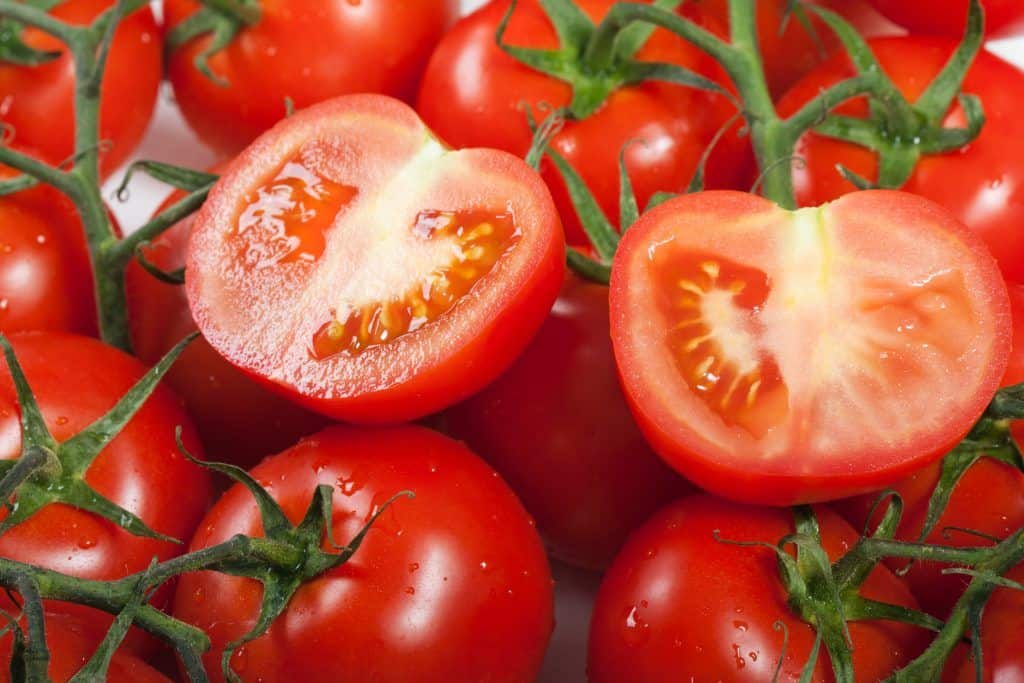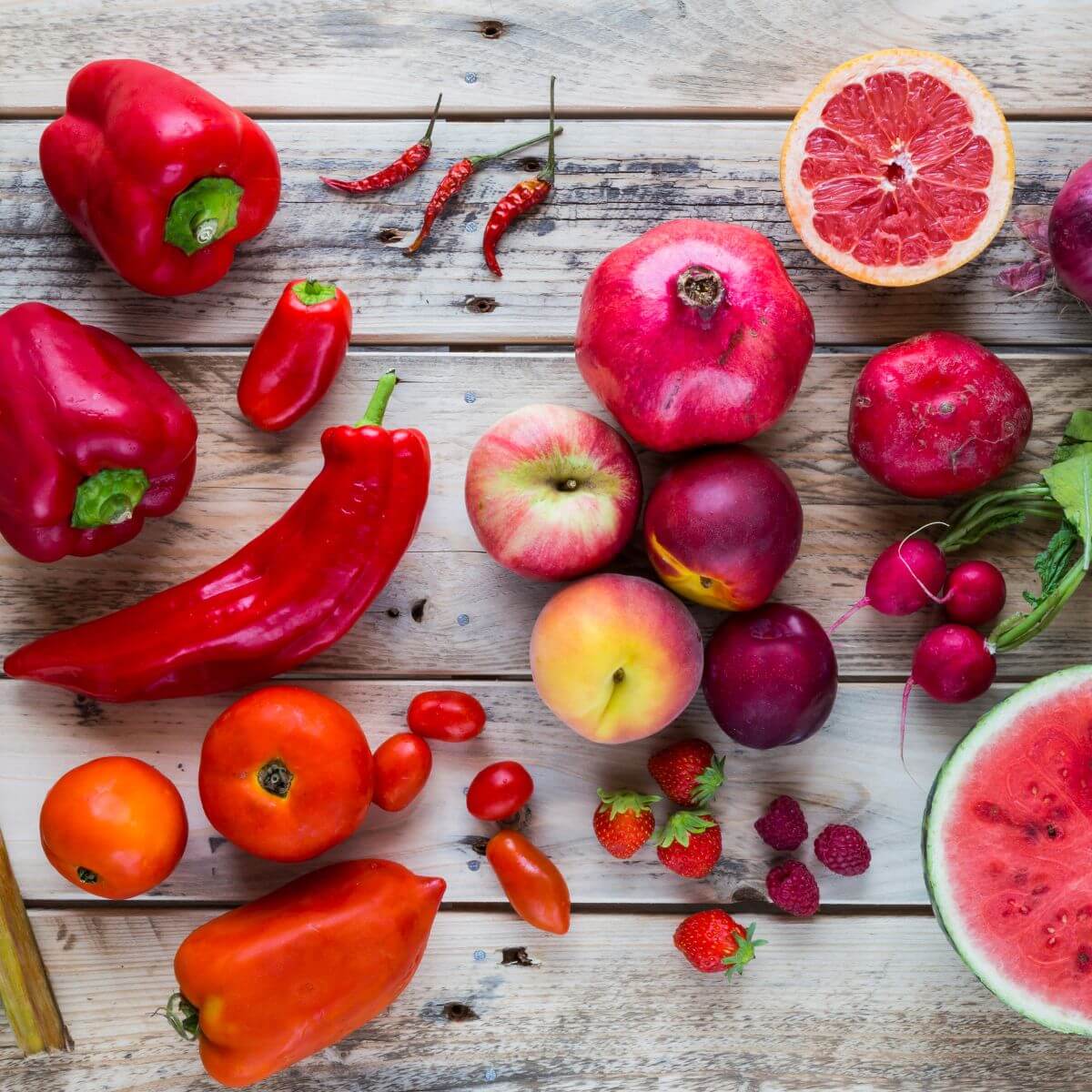Red food, a vibrant and captivating culinary delight, has long held a special place in cultures and cuisines worldwide. From the iconic red sauce of Italian pasta dishes to the fiery chili peppers of Mexican cuisine, red foods tantalize our taste buds and add a splash of color to our plates.
Beyond their culinary appeal, red foods are also nutritional powerhouses, packed with essential vitamins, minerals, and antioxidants. Dive into this comprehensive guide to explore the culinary significance, nutritional value, and cultural impact of red foods.
Culinary Significance of Red Foods

Red foods hold a profound culinary significance across diverse cultures, carrying deep-rooted historical and cultural meanings. Their vibrant hues evoke emotions, symbolize auspiciousness, and add a touch of festivity to various cuisines.
In many Asian cultures, red foods represent good fortune and prosperity. In China, red symbolizes joy and celebration, making red dishes a staple during festivals like Chinese New Year. The iconic Peking duck, with its glistening red skin, is a symbol of wealth and abundance.
Red Foods in European Cuisine
In European cuisine, red foods have played a significant role in shaping culinary traditions. From the vibrant red tomatoes in Italian pasta sauces to the deep crimson of Spanish paprika, red ingredients have added color and flavor to countless dishes.
- Beets: A versatile root vegetable, beets add a sweet and earthy flavor to salads, soups, and even desserts.
- Cranberries: These tart berries are often used in sauces, compotes, and baked goods, adding a touch of acidity and a vibrant red hue.
- Red bell peppers: With their mild flavor and crisp texture, red bell peppers are a staple in many Mediterranean and Middle Eastern dishes.
Symbolism and Associations
Red foods have also been associated with specific emotions and concepts in different cultures. In many Western cultures, red is often seen as a symbol of love, passion, and desire. In contrast, in some Asian cultures, red may be associated with anger or danger.
Regardless of their cultural interpretations, red foods continue to captivate our senses and add a touch of vibrancy to our culinary experiences.
Nutritional Value of Red Foods
Red foods, such as fruits, vegetables, and other sources, offer a vibrant array of essential nutrients that contribute to overall health and well-being. These foods are rich in vitamins, minerals, and antioxidants that play crucial roles in various bodily functions.
Vitamins and Minerals
Red foods are particularly rich in vitamin C, which is vital for immune function, skin health, and collagen production. They also contain significant amounts of vitamin A, essential for vision, immune response, and cell growth. Additionally, red foods provide ample amounts of potassium, an essential mineral that regulates blood pressure and supports heart health.
Antioxidants
Red foods are potent sources of antioxidants, which help protect cells from damage caused by free radicals. Lycopene, an antioxidant found in tomatoes, watermelon, and other red fruits, has been linked to reduced risk of certain types of cancer, such as prostate and lung cancer.
Anthocyanins, antioxidants present in berries, red cabbage, and other red foods, have anti-inflammatory properties and may improve cognitive function.
Health Benefits, Red food
Consuming red foods has been associated with numerous health benefits. Their high antioxidant content may reduce the risk of chronic diseases, such as heart disease, stroke, and cancer. The fiber found in red fruits and vegetables promotes digestive health and helps regulate blood sugar levels.
Additionally, red foods are often low in calories and fat, making them a healthy choice for weight management.
Varieties of Red Foods

The vibrant hue of red in food is a testament to the diverse range of nutrients and antioxidants they contain. From sweet and juicy fruits to earthy and savory vegetables, red foods offer a culinary adventure that is both visually appealing and nutritionally beneficial.
Here is a comprehensive list of red fruits, vegetables, and other red food items, organized into categories:
Fruits
- Apples:Rich in fiber, vitamin C, and antioxidants.
- Berries (strawberries, raspberries, cranberries):Excellent sources of vitamin C, fiber, and antioxidants.
- Cherries:Contain anthocyanins, antioxidants that may reduce inflammation.
- Grapes:High in antioxidants, including resveratrol, which has been linked to heart health.
- Pomegranate:Rich in antioxidants, vitamin C, and potassium.
li> Tomatoes:A good source of lycopene, an antioxidant that may protect against certain types of cancer.
Vegetables
- Beets:Rich in folate, fiber, and antioxidants.
- Bell peppers:Excellent sources of vitamin C and antioxidants.
- Cabbage (red):High in vitamin C, fiber, and antioxidants.
- Carrots (purple):Contain anthocyanins, antioxidants that may improve cognitive function.
- Radishes:Rich in vitamin C, potassium, and antioxidants.
Other Red Foods
- Red meat:A good source of protein, iron, and B vitamins.
- Red wine:Contains antioxidants that may have heart health benefits.
- Red lentils:Rich in fiber, protein, and iron.
- Red kidney beans:A good source of fiber, protein, and antioxidants.
- Red quinoa:Contains protein, fiber, and antioxidants.
Culinary Applications of Red Foods

Red foods offer a vast culinary canvas, inviting experimentation and delight. Their vibrant hues and bold flavors add visual appeal and gastronomic excitement to any dish.In salads, red foods such as tomatoes, radishes, and beets provide a crisp, refreshing crunch and a vibrant contrast of colors.
Their natural sweetness complements the acidity of dressings, creating a harmonious balance of flavors.Soups and stews are transformed by the addition of red foods. Tomatoes, peppers, and chili peppers impart a rich, savory depth, while beets and cranberries add a touch of sweetness and earthy notes.
The vibrant colors create a visually stunning presentation, making these soups a feast for the eyes as well as the palate.Desserts are not exempt from the culinary allure of red foods. Red berries, such as strawberries, raspberries, and cranberries, add a burst of tartness and sweetness to cakes, pies, and tarts.
Their vibrant colors make these desserts visually captivating, while their delicate flavors provide a refreshing contrast to the richness of the desserts.Pairing red foods with other ingredients and flavors is an art form. The sweetness of red berries complements the acidity of citrus fruits, while the earthy notes of beets harmonize with the nutty flavors of goat cheese.
The bold flavors of red peppers and chili peppers add a touch of spice and heat to dishes, creating a tantalizing interplay of flavors.
Red Foods in Art and Culture
Red foods have a rich and varied history in art and culture, symbolizing everything from passion and love to danger and warning. In this section, we will explore the representation of red foods in art, literature, and other cultural expressions, and analyze their symbolism and significance.
Red Foods in Art
Red foods have been depicted in art for centuries, often as a symbol of abundance, fertility, and good luck. In ancient Egyptian art, red fruits and vegetables were often used to decorate tombs and temples, and were believed to bring the deceased eternal life.
In Renaissance paintings, red foods were often used to represent the blood of Christ, and were often depicted in religious scenes.
Red Foods in Literature
Red foods have also been used extensively in literature, where they often symbolize passion, love, and desire. In the novel “The Scarlet Letter,” Nathaniel Hawthorne uses the scarlet letter “A” to represent the protagonist’s sin and shame, but also as a symbol of her passion and defiance.
In the poem “Ode to a Nightingale,” John Keats describes the nightingale’s song as “a red-breast Robin.” This use of red imagery suggests that the nightingale’s song is both beautiful and passionate.
Red Foods in Other Cultural Expressions
Red foods have also been used in a variety of other cultural expressions, including music, dance, and theater. In Chinese culture, red is the color of good luck and prosperity, and red foods are often served at festivals and celebrations.
In Indian culture, red is the color of the goddess Kali, and red foods are often used in religious rituals and ceremonies.
FAQ Compilation: Red Food
What are the most common types of red fruits?
Strawberries, raspberries, cherries, cranberries, and pomegranates are some of the most popular red fruits.
Are red foods always healthy?
While many red foods are rich in nutrients, some processed red foods, such as candy and sugary drinks, may not be as beneficial.
What is the significance of red food in Chinese culture?
In Chinese culture, red is associated with good luck, prosperity, and happiness. Red foods, such as dumplings and spring rolls, are often served during festivals and celebrations.
